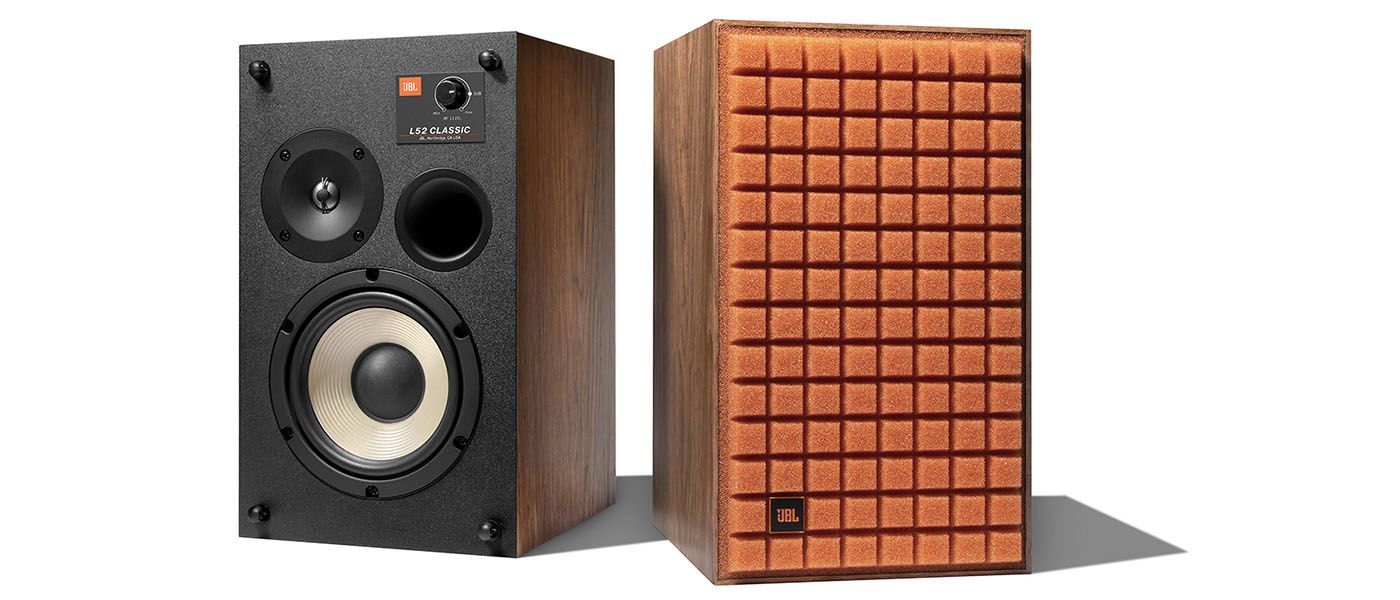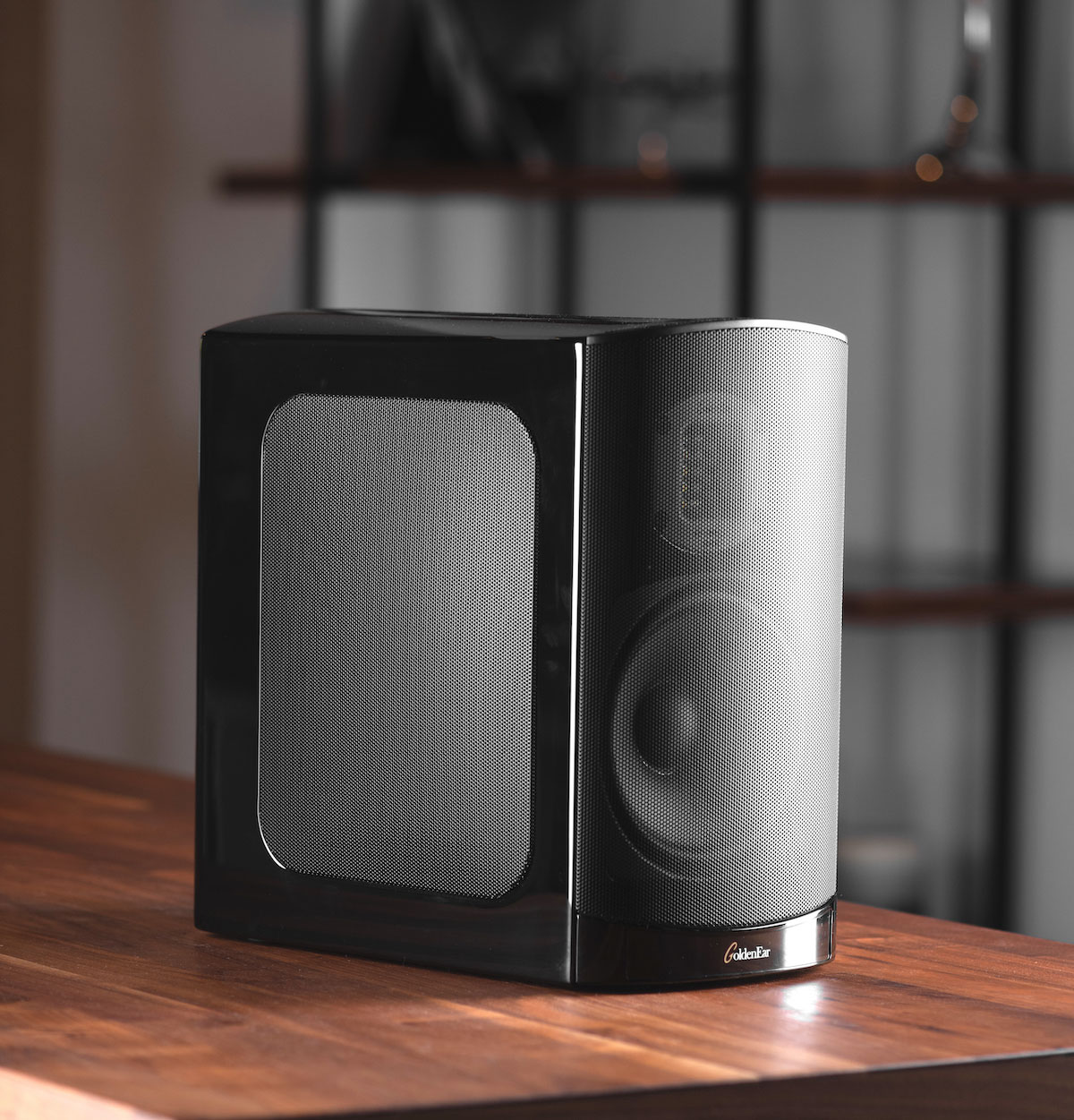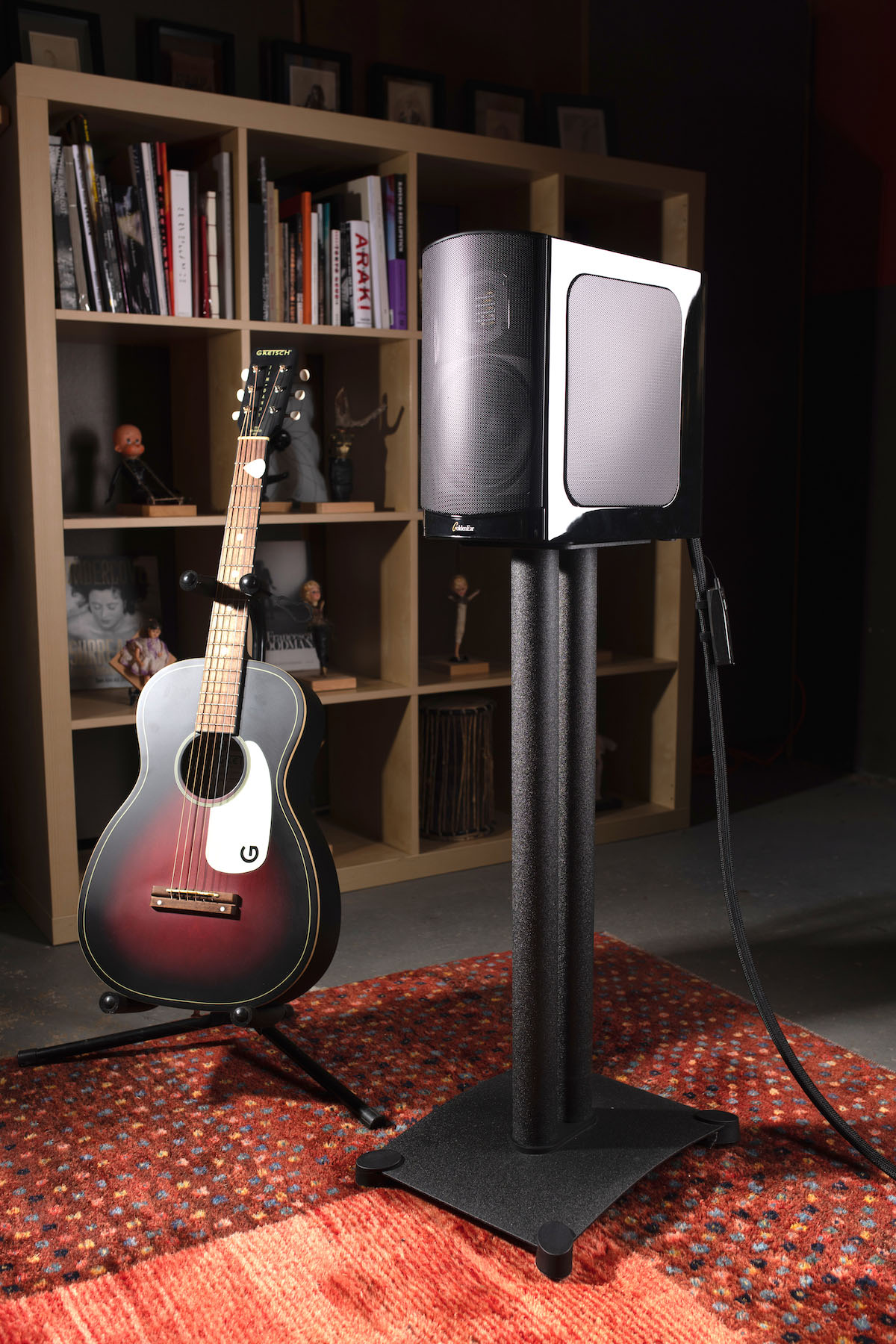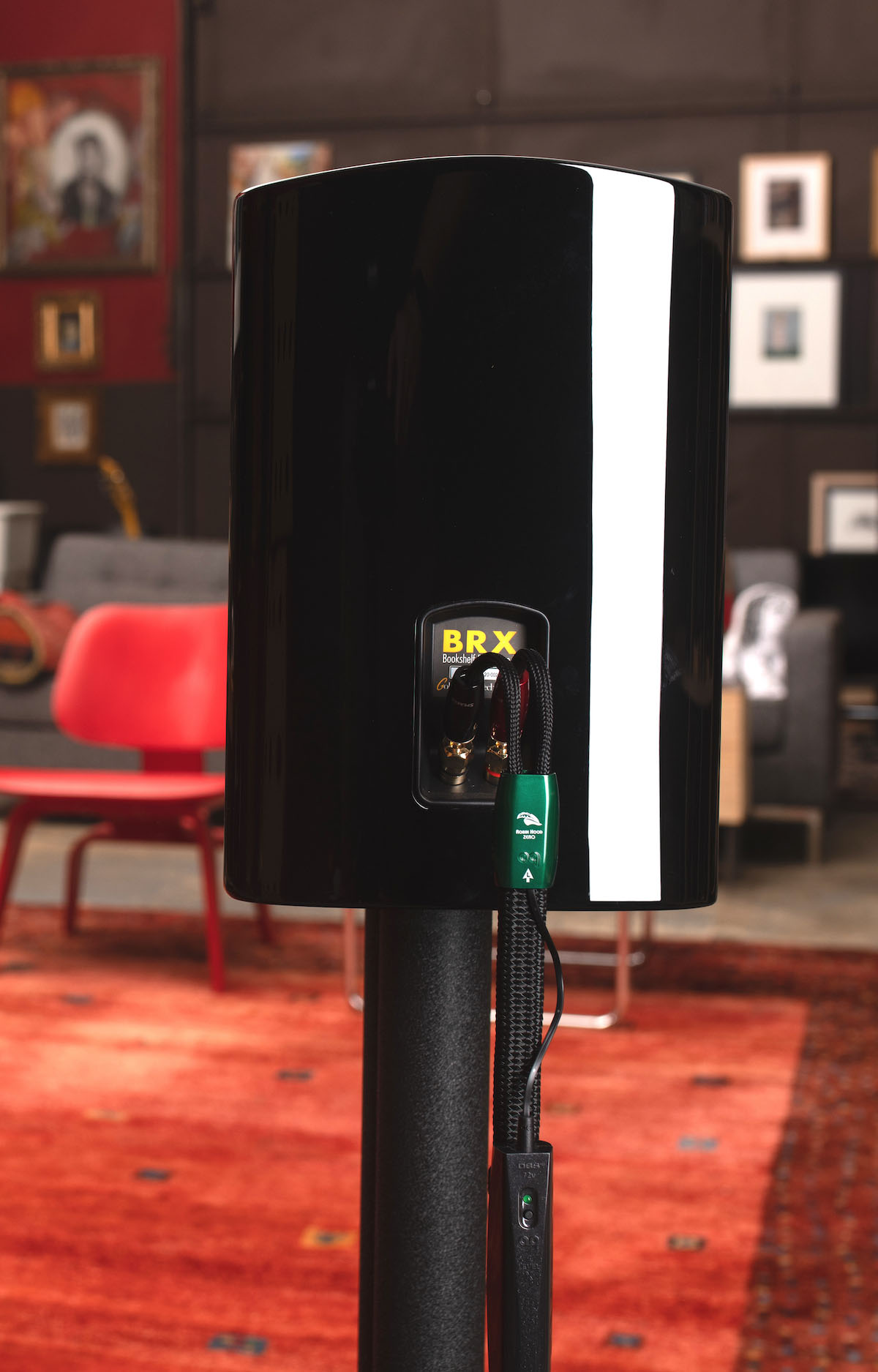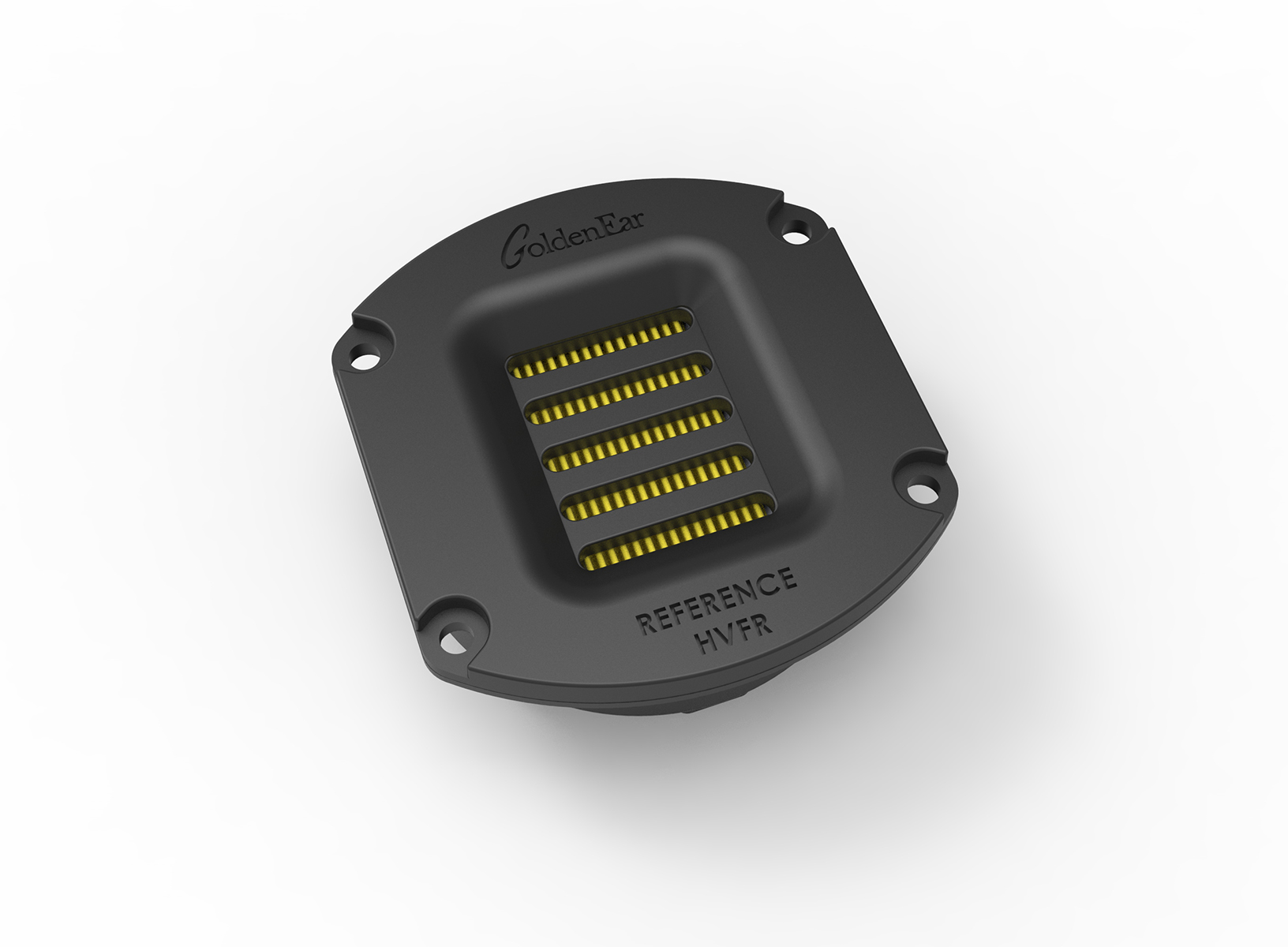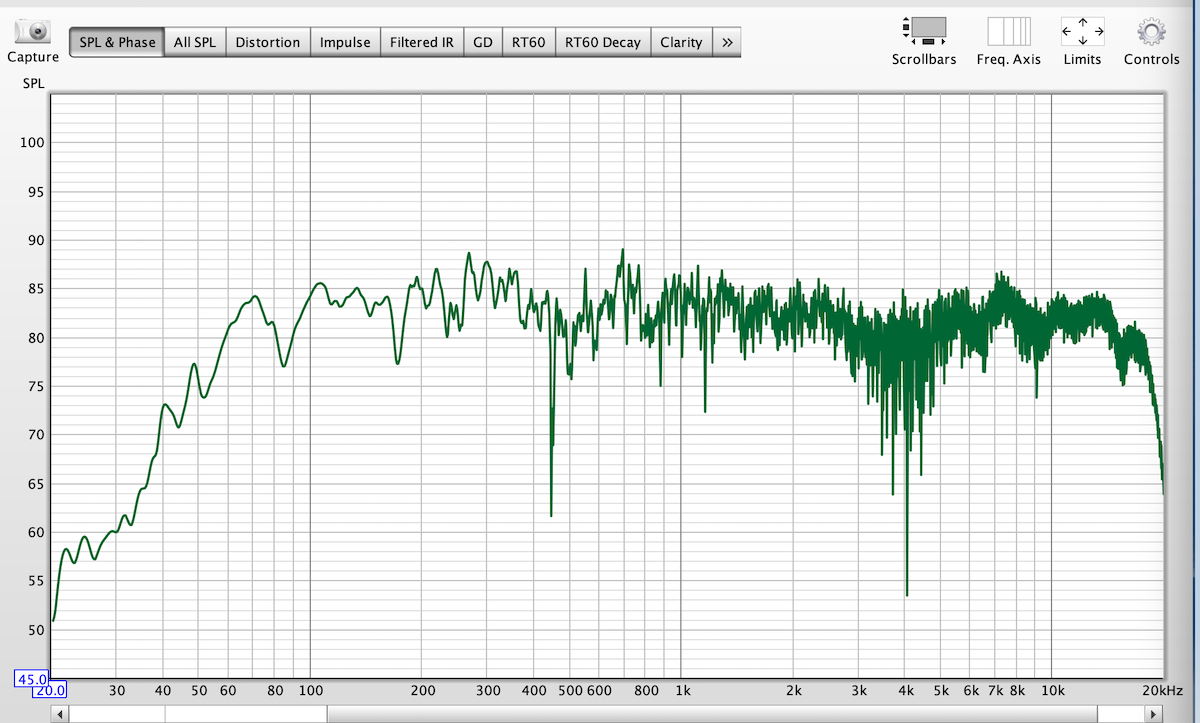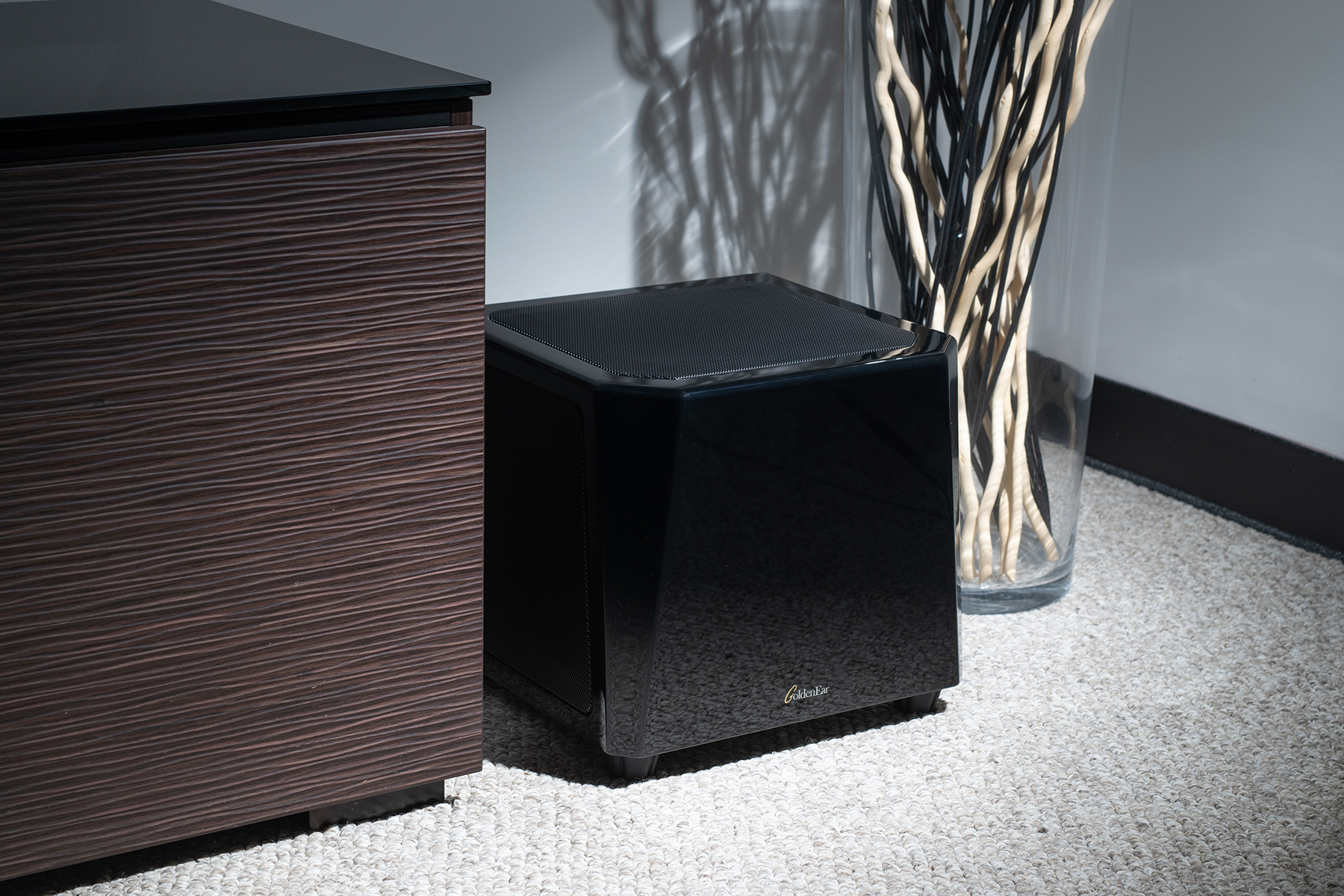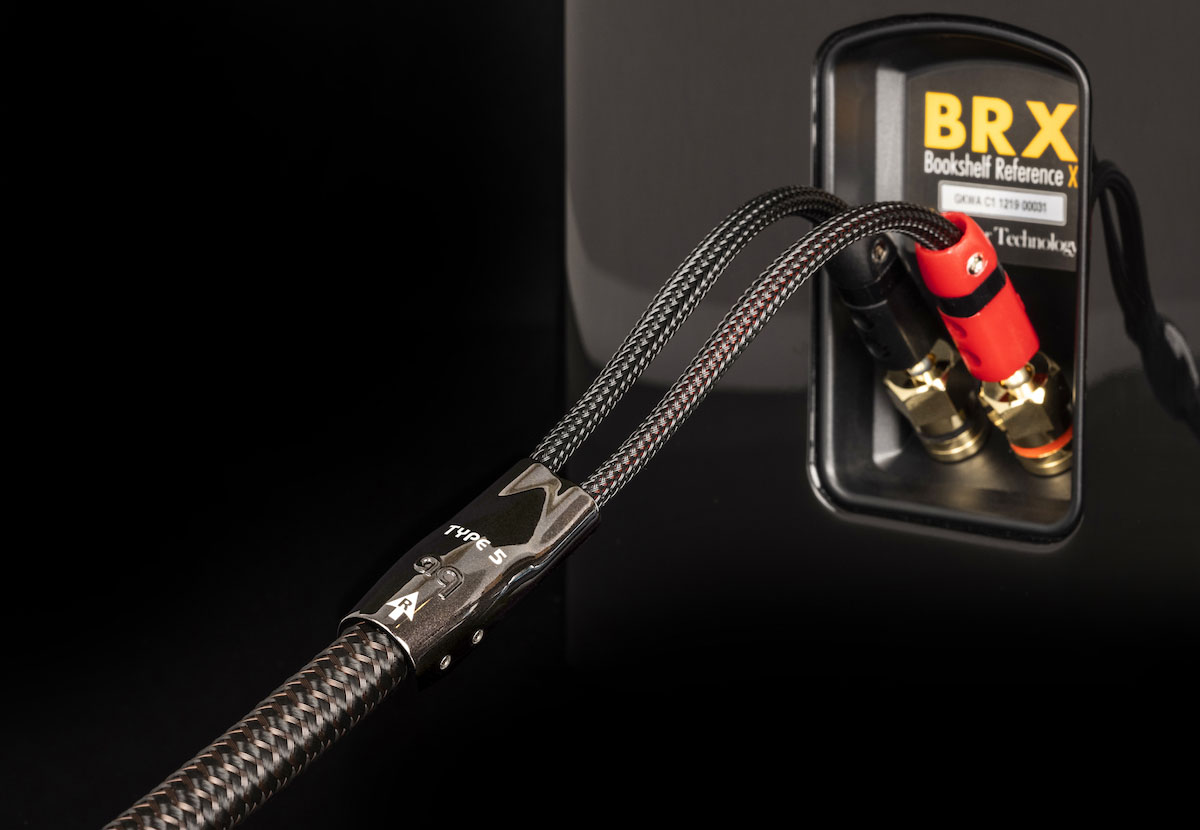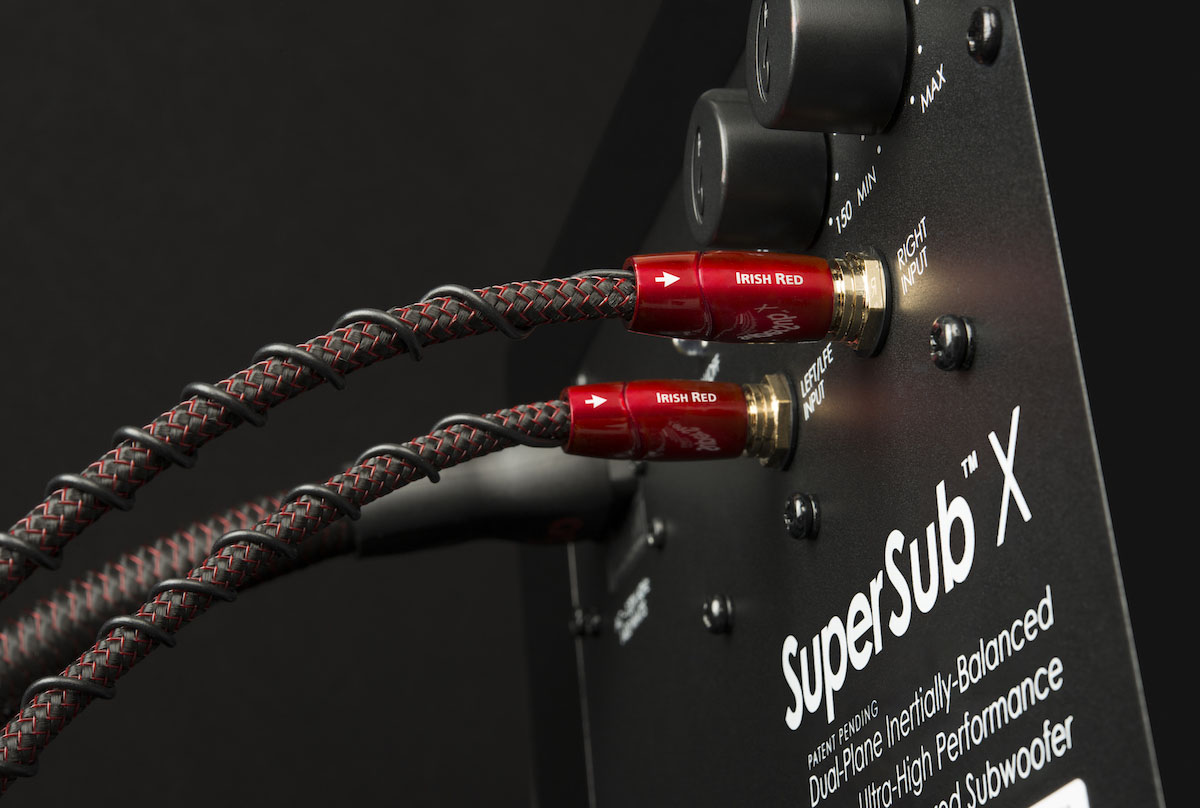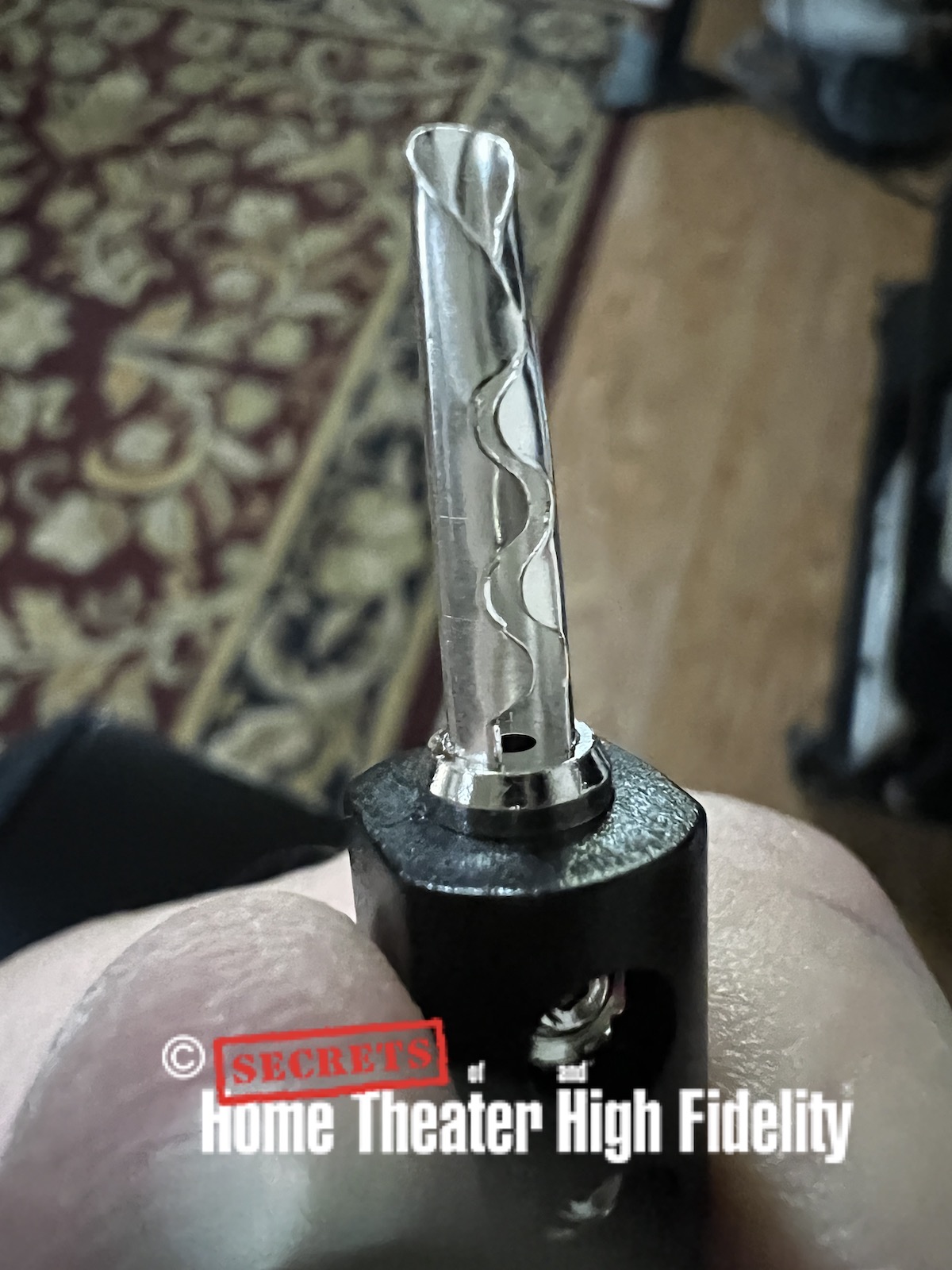These bookshelf/stand-mount speakers feature a ribbon tweeter, piano black finish, exceptional bass for their size, and the potential for sound quality far above what their $1,598 per pair price implies. The GoldenEar SuperSub X Subwoofer has been previously reviewed by Mr. Carlo Lo Raso on this website, and I find nothing to disagree with concerning his impressions of it. AudioQuest was kind enough to send a full wiring set with this GoldenEar review package, and I’ll have more to say about that product later In the review, but I’ll say up front that I found an audible improvement.
Secrets Sponsor
Let me start by saying that the BRX speakers are the first GoldenEar products that I’ve ever heard. My exposure to Sandy Gross designs comes from the vintage Polk line of speakers that I remember fondly from my early days as an audiophile. I had very high expectations for the GoldenEar products for this reason. So, do the GoldenEar Bookshelf Reference X speakers with the SuperSub X subwoofer live up to the expectations? Yes, I think they do! Mr. Gross has not lost his touch!
GOLDENEAR BRX SPEAKERS
- The BRX speakers image amazingly but require some care in placement to do so.
- The tiny SuperSub X astonishes with deep bass capabilities.
- The AudioQuest wiring package provided audible improvement, even through my usual speakers.
- Stands are mandatory for the BRX speakers.
- In small rooms, the SuperSub X will probably benefit from some slight elevation.
- In small rooms, the BRX speakers may work well without a subwoofer.
- If you like piano black, these GoldenEar products will delight you.
- If you’re fond of exceptional imaging, the BRX speakers can deliver!
This will be a multi-part review covering:
• The GoldenEar “Bookshelf Reference X” (BRX) loudspeakers
• The GoldenEar “SuperSub X” compact subwoofer
• A full set of AudioQuest wiring products
After his time at Polk, Mr. Sandy Gross was highly productive with other companies, such as Definitive Technology and most recently GoldenEar. Due to the lack of any GoldenEar retailers in my city, I’ve never had the opportunity to hear any of their products, despite their consistently positive reviews both in magazines and on the internet. I was delighted to have the opportunity to review the GoldenEar Bookshelf Reference X speakers and the compact GoldenEar SuperSub X subwoofer. My review package included a pair of the BRX bookshelf speakers and a SuperSub X subwoofer. AudioQuest, being a part of the parent Quest Group that makes and sells GoldenEar products, also included a full wiring set for the system.
DIMENSIONS:
8 1/16” wide (20.5cm)
12 ¼” deep (31.1cm)
12 1/8” tall (30.8cm) NOTE: Height includes feet
WEIGHT:
12lbs (each) (5.44kg)
FREQUENCY RESPONSE:
40Hz – 35kHz
INPUTS:
1 pair / speaker of 5-way binding posts
EFFICIENCY:
90dB (1W/1M)
IMPEDANCE:
Nominal 4Ω (8Ω compatible)
DRIVERS:
One high-gauss Neodymium, High-Velocity Folded Ribbon (HVFR) Reference Tweeter
One 6” high-definition, cast-basket mid/bass Reference Driver
Two 6.5” side-mounted, planar low-frequency radiators
RECOMMENDED POWER:
20-250 Watts / Channel
PRICE::
$1,598 / pair
SECRETS Tags:
BRX, Bookshelf speakers, GoldenEar, 2022, Sandy Gross
DIMENSIONS:
14” wide
12.75” tall (with feet)
13.25” deep
WEIGHT:
40lbs
FREQUENCY RESPONSE:
12 – 250 Hz
INPUTS:
LFE line-level input (no low-pass)
R/L line-level input with low-pass filter from 40-150Hz
DRIVERS:
Two 8” long-throw, high output bass drivers
Two 10.5” x 9.5” quadratic planar infrasonic radiators
AMPLIFIER:
1,400-Watt ForceField digital amplifier
PRICE:
$1,499
WARRANTIES:
On SuperSub X – 5 years (woofer) & 3 years (amplifier)
On BRX speakers – 5 years
Website:
Company:
SECRETS Tags:
SuperSub X, Subwoofer, GoldenEar, 2022, Compact
USB CABLE:
“Pearl” USB A to USB B 0.75m cable
PRICE: $39.95 (owned by reviewer)
XLR CABLE:
“Diamondback” 1m cables
Older (owned by reviewer)
RCA CABLE:
“Chicago” RCA 1m cables
PRICE: $99.95
SUBWOOFER CABLE:
“Irish Red” RCA 10-foot subwoofer cables
PRICE: $99.95
PORTABLE DAC CABLE:
“Golden Gate” 3.5mm to dual RCA 1m adapter cable
PRICE: $79.95
POWER CABLE:
“NRG-X3” 2m power cables
PRICE: $99.95
SPEAKER CABLE:
“Type-5” 10ft speaker cables / banana plugs
PRICE: $399.95
WARRANTIES:
1 year
Website:
Company:
SECRETS Tags:
AudioQuest, USB cable, RCA cable, Subwoofer cable, Portable DAC cable, Power cable, Speaker cable, 2022
- GoldenEar SuperSub X Review
- GoldenEar Triton One R tower speaker review
- GoldenEar Triton Reference speaker review
- GoldenEar Triton 2+ speaker review
The GoldenEar Bookshelf Reference X speakers (henceforth the BRX) arrived to do battle with my own pair of Klipsch RP-600m speakers. Having had significant time to tweak the Klipsches (and to install some GR-Research No-Rez damping inside the cabinets), the Klipsch sounded quite marvelous in my room. Imaging was deep and wide, and by tweaking toe-in, the liveliness of the audio presentation remained (even at low volumes) without any hint of hardness. My expectation was that being similarly sized bookshelf speakers, the BRXs would work in the same locations that had worked so well for my Klipsch speakers. Boy, was I wrong…
The BRX speakers are highly unusual in that only three sides of the box are fully intact. The front baffle board, of course, houses the two drivers. The two sides of the cabinet house the two passive radiators. One might think that having so many sides with holes in them might cause the cabinet to lack structural integrity. Apparently, nothing could be further from the truth. The cabinets are some of the most inert that I’ve encountered.
There are some peculiarities, though. The cabinets have a protrusion on the front bottom; call it a “lip.” I thought that this would cause audible diffraction of the wave launch, but I could hear nothing amiss. The magnetic grilles have a slice of fitted foam on their bottoms, intended to cover the bottom lip, so apparently, GoldenEar thought that the lip might need some attention too. But listening with or without the grilles, I couldn’t hear anything that sounded like a diffraction issue. I did ask the GoldenEar engineering team whether they recommended listening with or without the grilles. Their reply was that the speakers might sound slightly better without the grilles but having the grilles on shouldn’t make much of a difference. This is not the case for many speakers, but I found it exactly so for the BRX speakers. The grilles didn’t damage the sound so far as I could tell.
A second peculiarity (at least, in comparison to most speakers) is that the speaker cabinets are wider at the rear than at the front. From a diffraction-reduction standpoint, and from an internal standing-wave standpoint, this makes perfect sense. If, however, you eyeball the speaker toe-in as I do, the sloped cabinet sides make comparing the right and left speaker’s toe-in more difficult by an order of magnitude. The good news is that they work perfectly well even if their toe is a degree or two off. Close enough DOES win the cigar, in the case of the BRXs.
Another design choice to be aware of is that GoldenEar has finished these BRX speakers in piano black lacquer. The finish is quite beautiful. That said, I’d much have preferred a wood grain, but that’s just personal preference and doesn’t affect the sound quality at all. Nevertheless, if WAF is a concern, you may want to solicit the opinion of your significant other about piano black prior to bringing the BRXs home.
Secrets Sponsor
The bottoms of the speakers have rubber feet on them. If your stand platform is large enough, the feet will give some protection against the speaker sliding off onto the floor. If your stand is too small, however, you’ll either need to add a larger plate so that the feet can achieve purchase, or engineer another solution.
I normally prefer a flat speaker bottom so that I can apply industrial, self-adhesive Velcro tape. This prevents the speaker from ever accidentally falling off the stand (and indeed, one can usually lift the stand itself by lifting the speaker without the Velcro coming loose). But I had no problems with the BRX speakers on either of my pairs of stands.
The only other thing that I find slightly unusual about the BRX design is that the GoldenEar engineers have opted to offer a single pair of five-way binding posts instead of the more popular bi-wire terminals. I personally have no objection to the single terminal pair. In fact, I’d rather have one good set of terminals (which the BRX has) rather than two cheaper pairs. I don’t consider this a negative at all unless you have already invested in bi-wire speaker cables.
A word needs to be said about the High Velocity Folded Ribbon tweeter used on the BRX speakers. This tweeter sounded heavenly in my room – extended, clear, and never shrill. I almost take such tweeter performance for granted these days, but the BRX tweeters stood out from the crowd as a paragon of excellence.
During the review, I took the time to query the GoldenEar engineering team about their design goals for the BRX. Among their reply comments:
• lifelike imaging
• superb transparency
• natural detail
• robust bass
• lifelike immediacy
• voicing to match Triton Reference towers
Aside from the last bullet point (which I am unable to verify, lacking any Triton Reference towers for comparison), I’d have to agree that the design goals were met, point for point.
I also asked the engineering team what thing they might change if they had the BRX design to do over again, and they mentioned that the four-Ohm impedance of the speakers may not be the best match for some AVR models. They have confidence that most AVRs can drive them but feel that amplifiers with greater current capability may sound better.
I asked for a recommendation for the crossover frequency between the BRX speakers and their subwoofer and was told that the GoldenEar folks demonstrate the combination at audio shows without any crossover. The BRX speakers are typically run full range and the subwoofer low-pass filter is used to “blend in” the sub below the natural roll-off of the BRX speakers. This is how I used the combination in my audition.
My audition equipment included:
• Mac mini running Roon with external music library on a USB HDD
+ AudioQuest Pearl USB cable to:
• Emotiva Stealth DC-1 balanced DAC/Preamplifier
+ AudioQuest Diamondback XLR cables to power amplifiers
+ AudioQuest RCA Irish Red subwoofer cables to subwoofer
• Emotiva PA-1 Class-D monoblock power amplifiers
+ AudioQuest NRG-X3 power cords
+ AudioQuest Type-5 speaker cables to
• GoldenEar BRX speakers on 29” and then 24” stands
• GoldenEar SuperSub X subwoofer
Setup of the GoldenEar BRX speakers: Since the 29” stands that I had in my listening room were just the right height for the BRX speakers (per GoldenEar), and since my positioning was working so well with my previous bookshelf speakers, I just swapped out my Klipsches for the review pair of BRXs and fired the system right up.
The fronts of the speakers were four feet from the wall behind them and nine feet apart. Each speaker was 10 feet from the listening position. The room is fitted with a carpet, sound absorbers, two diffusers, and a nine-foot ceiling. The speakers are far enough from side walls that side wall reflections are not an issue. GoldenEar was also polite enough to let me know that they’d already broken in the BRX speakers prior to shipment.
The positioning that had worked so well with my Klipsch speakers worked somewhat less well with the GoldenEar BRXs. With the fronts of the speakers parallel to the wall behind them, the depth of the center image became significantly truncated, and the soundstage outside the plane of the speakers went missing. The music still sounded very good, tonally, but the image wasn’t what I expected.
I have an audio amigo whom I’ve nicknamed “The Speaker Dancer.” He has proven to me time and time again that even slight differences in speaker height, placement, and toe-in can make HUGE differences in speaker performance. And it was so with the GoldenEar BRX speakers…
My initial adjustment was to bring the speakers one foot closer to each other and to bring them an additional foot into the listening room. This not only snapped the center image into focus but also restored the depth that I was accustomed to. This placement, however, did nothing to restore the soundstage outside the plane of the speakers.
My second attempt was to move the speakers significantly closer to the wall behind them while simultaneously changing the toe in so that the speakers pointed directly toward the listening position. This widened the soundstage, but the center image became less focused. This is the opposite of what I expected from this move. Perhaps the passive radiators on the sides of the BRX speakers were changing the acoustical radiation pattern in ways that I’ve not previously experienced…
At this point, I accessed the GoldenEar website where the recommendation was to start with the same equilateral triangle that I started with. Probably good advice for most rooms, but for some reason, not yet working in mine. My third attempt was to take the BRXs off the 29” stands and place them on a pair of 24” stands with some tilt-back to keep the drivers aimed at the listener’s ears. The speakers were placed at the same width as in my second attempt (about eight feet apart), but at the same distance from the back wall as the initial placement (fronts of speakers about five feet from the back wall). Toe-in was pointing about two feet to the outside of the listener on both sides. Then I edged the speakers closer together by another few inches…
BANG! The speakers came to life – deep and detailed center soundstage with off-stage events happening outside the plane of the speakers. Some of the very best sound I’ve heard in my room. The speakers also sounded significantly fuller and bass detail snapped into focus. The blend with the SuperSub X subwoofer became more integrated. Excellent!
I take the time to bore you with all the previous setup detail to emphasize again the point that if you want the very best from the GoldenEar BRX speakers, placement will be important. In fact, I’d say “placement uber alles.” The bottom line is that if you plunk a pair of BRX speakers just anywhere in your room, they’ll still sound quite good, but you may not be getting the (potentially superb) performance that you’ve paid for. These speakers provide exponential improvements in performance when you take the time to find their best placement.
One other placement comment – My Klipsch RP-600m speakers sound and image their best with the listener’s ears at or just below the level of the woofer. But the GoldenEar BRX speakers sound and image their best with the listener’s ears at or just above the level of the tweeter. These comments may be specific to my room, so feel free to experiment!
Let’s talk about amplification – Yes, the BRX speakers will work with your AVR. And with the best AVRs, you might even get really good performance. That said, you may find that using a premium power amplifier and/or a premium front end may surprise you with additional BRX detail and delicacy. These are very revealing speakers. They will tell you if your amplification is less than appropriate. So, what constitutes “appropriate?”
That will differ with factors including how large your room is, how loudly you like to listen, and how tolerant you are of audible distortion. Whatever electronic signal you put into the BRX speakers is what will come out. I have a medium-sized room but don’t normally listen too loudly. For me, a good 50 WPC amp (tube or solid-state) would be sufficient. If I wanted to run the BRXs without a subwoofer, however, I’d probably want a minimum of 100 WPC. If I liked to listen not only loudly but also without a subwoofer, I’d think that 200 WPC wouldn’t be at all excessive.
But ultimately, the forte of the BRX isn’t very high or very low volume listening. Instead, the speaker excels at mid-volume clarity. If you prefer very low-volume listening, the BRX may not sound dynamic enough for you. The BRX sounds its best above a certain volume threshold and sounds slightly flat below that threshold. The speakers still sound good, mind, but not quite as dynamic as horn-loaded speakers.
The BRX can also sound strained if you try to do rock concert levels. But for most people, neither of these low or high-volume limitations will be issues. The “window of loudnesses” that the BRX speakers will sound good at is quite wide.
I listened (briefly) to the BRX loudspeakers sans subwoofers. They definitely surprised me with their bass capabilities (both in terms of clarity and extension). This is not normally the case with bookshelf-sized speakers, so I’d have to call the passive radiators of the BRX speakers a huge success.

Fritz Reiner – Chicago Symphony “The Reiner Sound”
One of my favorite speaker test tracks is from the CD “The Reiner Sound.” The track “Totentanz” by Franz Liszt showcases one of the world’s greatest conductors, Mr. Fritz Reiner, at the peak of his capabilities, leading one of the world’s greatest orchestras (the Chicago Symphony at their peak), in an amazing piece written by one of the world’s greatest composers, Franz Liszt. The piano soloist, Mr. Byron Janis, is equally amazing. The 1958 recording from Chicago’s Orchestra Hall on the RCA Living Stereo label, has one of the widest dynamic ranges that I’ve heard on the 1993 remastered CD version.
The piano solo section is very quiet, but if you turn up the volume for that section, you’ll be blown out once the full orchestra returns unless your system has the dynamic range to keep up. The GoldenEar BRX speakers have that dynamic range. Despite their modest size, the passive radiators allowed the speakers to track the volume variations with transparency, cleanliness, and fidelity. I was amazed that such small speakers could put out such a rich, deep, and accurate sound. No subwoofer was used on this track, and the little BRX boxes had to stand alone for the test. They did.
There are some wicked treble transients in this recording as cymbals crash at certain points, but the HVFR tweeters of the BRX speakers didn’t distort. In fact, they did a fantastic job of catching not only the cymbal fundamentals (the brass) but also the overtones. Many tweeters emphasize the tizz without catching the brass sufficiently. The HVFR tweeters avoided that common error.
The image below is the measurement obtained using Room Equalization Wizard (REW) software with a calibrated UMIK-1 microphone. The REW defaults were used, and the response is what I’d expect. Note that this frequency sweep was made without any subwoofer active.
The GoldenEar SuperSub X subwoofer surprised me immediately with its low-frequency extension. I wasn’t expecting truly low bass from such a small box. But the extension is just as good as my 15” sealed sub (maybe better). The big 15 will play louder, to be sure, but since I don’t normally listen loudly anyway, the GoldenEar SS-X would certainly be an acceptable and more compact alternative.
The SS-X has even fewer fully structural sides than the BRX speakers. The two sides of the small subwoofer box house eight-inch drivers that operate in a push-pull fashion (when one is going out, the other is going in). These are supplemented with top and bottom passive radiators. The back is where the plate amplifier is mounted. The only un-perforated side of the entire subwoofer is the front. I’d expected the thing to be flimsy since it’s mostly drivers, radiators, and amp, but (like the BRX speakers) the box seems not only sturdy but also non-resonant.
Since there is another full review of this subwoofer on this site written by the astute Mr. Carlo Lo Raso, I’ll not spend too much time on the SuperSub X other than to say that it blended well with the BRX speakers, always sounded tuneful, didn’t muddy the bass, and never sounded distorted. Considering its small size and huge performance, I’d recommend the sub without reservation.
A few issues that did catch my eye about the GoldenEar SuperSub X:
• There are no balanced XLR inputs. If you use balanced circuitry and interconnects in your system to minimize noise, you’ll need some RCA adapters for these subwoofers.
• Unlike many subwoofers in this price range, the SS-X lacks a phase dial. In my opinion, the phase dial on subwoofers is of marginal utility, but many disagree with me. So be advised that if you want a sub with phase adjustment, the SS-X won’t offer that option.
• Some enthusiasts prefer to connect their subwoofers to the speaker terminals of their system. The SS-X has no speaker-level inputs which is another fact that the potential purchaser should know.
• The SS-X lacks any built-in room correction software. If you run an AV receiver or processor as a front end, this lack will not matter since your equipment already offers room correction. But if you intend to use the SS-X in a stereo-only environment, and you feel that your room requires electronic correction, you’ll need to room correct elsewhere.
• If you want (or need) to connect your subwoofer(s) wirelessly, you’ll have to purchase additional equipment to allow that. The SuperSub X does not offer a wireless option.
In my room, the SuperSub X sounded smoother when I placed it on a stand about a foot off the floor. The SS-X is so tiny that this should be easy for most users.
As an aside, I normally use Room Equalization Wizard software with a calibrated UMIK-1 microphone to determine the room performance of my equipment. Then I use the Digital Signal Processing (DSP) features in my Roon music player to compensate. The lack of room correction in the subwoofer itself is not a detriment to my system.
Those who read my reviews on a regular basis know that I’m a “wire skeptic.” I consider the differences made by wiring to be small compared to the costs of “audiophile wire.” That said, when the AudioQuest wires arrived (a day in advance of the GoldenEar products), I replaced every wire in my system that I could with the AudioQuest alternatives. Then I fired up the stereo and sat down to listen. And guess what? I could hear definite differences. Not only that, but the differences were positive ones. In particular, the center images seemed significantly deeper and more detailed.
AudioQuest products are better-constructed (and of higher quality materials) than many of the budget brands you’ll find online. You do pay a premium for that construction quality, but you can be relatively confident that the products you get from AudioQuest are not likely to fall apart or malfunction. This isn’t always the case with some generic wiring products from Amazon or eBay.
My audio amigos (who haven’t yet heard the AudioQuest products in my system) harass me and claim that any improvements I’m hearing are the result of disturbing the oxidation layer on my previous connectors. I’m not so sure. I seem to be forever on the floor, with a flashlight, behind the audio stand, saying the “plumbing words” as I strive to plug or unplug a connector that either is reluctant to move or that I’m trying to put in the wrong socket.
My audio connections get changed often (ALL of them). Unlike my friend Walt, who had his McIntosh amplifier that he bought in college (four decades ago) seem to quit working. The cause wasn’t the Mac, but rather a ball of galvanic corrosion that formed around his interconnects. He cleaned them – now he’s good for another 40 years!
But being an audio reviewer, my connections are lucky to go for a month without being changed. Because I change connections so often, I respect the AudioQuest connectors. They seem to fit tighter and be better made than what I see on discount wiring. For example, most IEC power plugs are but finger-tight in their sockets. The AudioQuest ones I had to wiggle and force to get them into the sockets. They certainly won’t fall out or easily pull loose. This alone might justify the AudioQuest pricing.
One thing that I noticed on the AudioQuest “Type 5” ten-foot speaker cables ($400 the set) was that they used a type of banana plug that I’m not fond of.
In my experience, these plugs have the propensity to bend unless they are exactly centered in the socket you’re trying to insert them in. So, should you choose to buy the “Type 5” AudioQuest speaker wires with banana plugs, be aware that you need to employ some care when connecting the banana plugs; don’t go trying to force the plug into its socket or you can instantly ruin the connector. Should AudioQuest have used a more durable plug on wiring in this price range? Maybe. AudioQuest calls these their SureGrip 300 banana plugs, which use a base metal of beryllium/copper that has been plated with silver. The company claims that, in use, while the beryllium/copper base metal is soft and malleable, it is also stronger than most common phosphor/bronze connectors. More importantly, they claim it’s a better conductor and sounds better. The plugs appear to be attached with a set screw, so even if you did damage a plug, AudioQuest can supply a replacement.
But back to the sound of the “all AudioQuest” system – what was the primary cause of the audio improvement? Was it the USB cable? The power cords? The interconnects? The speaker wires? I honestly don’t know, and I didn’t do the experimentation to find out. It may just be synergy between the entire suite of cabling. But for whatever reason, the AudioQuest wires are one of the few sets that have made a positive audible difference to me. Bravo AudioQuest!
The GOLDENEAR BRX BOOKSHELF SPEAKERS and SUPERSUB X SUBWOOFER sound amazing! The AudioQuest wiring package matches their quality and sound with a noticeable improvement. Together, they make an excellent combination!
- The BRX speakers can sound amazing with or without a subwoofer.
- The tiny SuperSub X subwoofer sounds like a MUCH larger and more expensive product.
- The AudioQuest wiring package is one of the only ones that has made a clearly audible and positive improvement in my system.
- The system, as a whole, sounds like a MUCH more expensive audio system.
- Imaging and sound staging are exceptional.
- Available speaker and subwoofer finishes besides black.
- Package discounts on AudioQuest wiring.
- Included wireless options for the subwoofers.
- Included room correction for the subwoofers.
- Higher quality banana plug connectors or optional locking bananas for speaker wires.
Let’s be clear here – This is $2,850 worth of speakers and sub hooked up with more than $1,160 of wiring. If my total budget was over $4,000, I’d likely be looking at some of the GoldenEar tower speakers instead, but that’s just me. And despite the pricing of the wiring package, I must confess that unlike many (Most? Almost all?) of the other wires I’ve heard, I actually heard audible improvements from these AudioQuest products.
So, ignoring costs for the moment, what did this package ultimately sound like? That’s a poser. You could have this entire package and make it sound only so-so by mispositioning the speakers and/or the subwoofer, or by driving everything with a cheap AVR. But buying premium equipment alone does not guarantee premium sound. You can’t just buy an “oh wow” audio experience. You must do at least some work. But that work is both simple and fun. Try moving the speakers around. The distance from the wall behind them, distance to the listener, distance from side walls, and distance between the speakers all make differences in what you’ll hear.
I’d also recommend spending some time experimenting with toe-in (or maybe even toe-out) as well as getting the subwoofer(s) up off the floor by a foot or even two. Your room is a three-dimensional space, not a flat paper floor plan. The echotropia of the space will have an influence on the sound. Like that word? You have my permission to use it! LOL
My time with the GoldenEar BRX speakers and the SuperSub X subwoofer has been a rewarding and pleasant experience. And ultimately, we also have to talk about value. Are the GoldenEar products and the AudioQuest cable products worth the prices asked?
For the GoldenEar Bookshelf Reference X speakers, I’m going to say that they are definitely worth their price and can actually be quite a bargain provided that you don’t want to listen at exceptionally low or high volumes, provided you provide them with an adequate front end and power amplifier and provided that you’re willing to invest the time and effort to position the BRXs properly in your room.
For the SuperSub X subwoofer, I believe that the exceptional performance and small size make these a bargain as well. Note that GoldenEar is introducing a new subwoofer line soon (not yet available at the time of this review). So, consider your options prior to purchase.
For the AudioQuest wiring, the value question is more vexing. If you already have high-quality interconnects, power cords, and speaker wires, the cost of replacement may be prohibitive. On the other hand, if you’re wiring a new system or in the market for an upgrade, I strongly recommend that you at least audition the AudioQuest products. The good news is that AudioQuest is one of the most broadly distributed lines of audio wiring, and you may be able to audition it at a Magnolia kiosk of the Best Buy chain. If not, there are many companies that will allow a home evaluation, and even if you decide to return the wiring, shipping is quite inexpensive. I wouldn’t spend an equivalent amount on any other brand without at least auditioning the AudioQuest products.
Photo credits:
BRX Photos – Lee Shelly Photography
SuperSub X Photos – The Quest Group
AudioQuest Photos – James Pan


